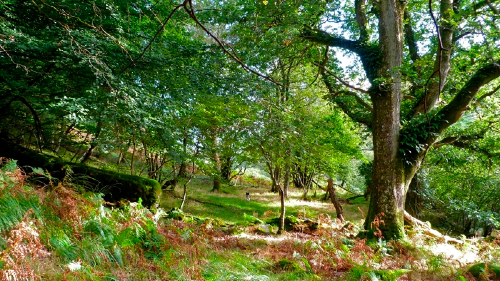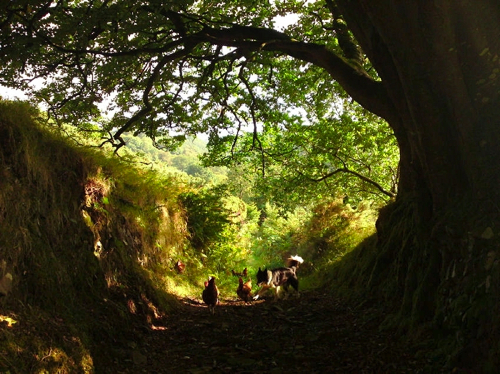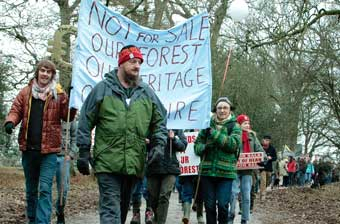We need to campaign against these proposals…
The National Trust is gearing up to campaign with an online poll, following the strongest and most radical opine for many years seen by the NT by way of Sir Simon Jenkins: www.guardian.co.uk/commentisfree/2011/jul/28/localism-bill-sacrifice-countryside-market
Within the Advice produced by the Planning Inspectorate for use by its Inspectors, there are two significant elements which not only contradict the RT Hon Greg Clark MPs personal rhetoric, but which are so far removed from the definition of sustainable development as to be an insult to the Brundtland definition.
‘Removing the brownfield target for housing development’
The lack of investment in remediating UK post industrial and urban landscapes cannot be blamed on the current government. The previous government also fully recognised that the costs were simply too much for developers and thus ‘garden grabbing’ became a real nuisance. It can also be said that those in charge of our natural heritage spent far too long concentrating on protecting niches of the rural landscape, without realising the consequences of ignoring the urban and peri urban landscape and the huge areas of post industrial land within it. That landscape, as witnessed from a train window en route to the centre of a town or city, had huge potential but the developers could not meet the costs of remediation by themselves and should not be expected to do so.
How can we as a generation sit back and allow this landscape to be left for future generations to remediate? The resulting black hole within our peri urban environments will not all be snapped up for future Olympic games’ sites and it can neither be simply turned over for ‘community woodlands’ or green space, without massive investment, which is clearly not available for the foreseeable future.
So are we to blame? Our attention and pockets concentrated on the preservation of a rural landscape idyll? Well yes, but this does not excuse the sheer lack of vision contained within the draft NPPF nor does it excuse the lies which have been placed before the public as a wall of a defence for the realities of what the NPPF is capable of doing to both our countryside and towns. The comments that it has the potential to destroy large tracts of rural landscapes and the biodiversity within them are not far fetched, the quantity of housing and infrastructure that is genuinely needed ratify such comments.
‘Removing rural exception sites policy’
The Rt Hon Greg Clark, stated ‘There is no change, either, in the position of Areas of Outstanding Natural Beauty, Sites of Special Scientific Interest, National Parks or other protected habitats’: www.huffingtonpost.co.uk/greg-clark/reforming-planning-for-fu_b_918391.html
Well according to the ‘Advice produced by the Planning Inspectorate for use by its Inspectors’ there is a change and not an insignificant change –
‘Current policy allows local councils to set ‘rural exception site’ policies which allocate and permit sites solely for affordable housing in perpetuity for local people in small rural communities. This is where housing would not normally be considered appropriate due for example to policy constraints, such as Areas of Outstanding Natural Beauty. Rural exception sites seek to address the needs of the local community by accommodating households who are either current residents or have an existing family or employment connection. However, currently, the rigid requirement for sites to be only for affordable housing limits local councils’ options for meeting the full range of housing needs. This can lead to local councils being discouraged from taking a wider view on the need for housing in those rural areas and considering the balance to be struck between the benefits of meeting housing needs and maintaining current constraints.’
Greg Clark encourages response – ‘I look forward to receiving responses. Suggestions are actively encouraged. But if they are to be worthwhile, they should be serious – detailed, specific and practical.’
It is very difficult to respond to those who cannot grasp the fundamental definition of sustainability in the first place. Will it be akin to arguing with a creationist about dinosaur existence? The Brundtland definition is referred to but the proposals are almost the complete opposite of Brundtland. But respond we must.
Have you ever sat down and watched one of a plethora of ‘build your own home’ television programmes and having heard the presenter describe the construction and eventual house as being ‘sustainable’ wondered what exactly is sustainable about it as the umpteenth delivery of cement arrives. Usually towards the end of the programme a quick shot of an FSC logo’d bird box hanging from a tree which has had its basal area ripped apart by one of the afore mentioned deliver lorries is displayed when the question of sustainability arises in the narrative. Such a misconception of sustainability has clearly entered the mindset of the politicians, who risk damaging relations with their European counterparts if they should actually continue to greenwash on such a mammoth scale.
The other hugely depressing factor is that it has polarised interested parties, who should have been working together. Some of the commentary from pro development lobbyists against those who have criticised the NPPF and who should or have been working with them to further sustainable development are harsh. The planners are the frontline, currently facing huge cuts, and have been habitually treated as unprofessional and yet have in reality made the job of ensuring progression in a minefield of opposing fractions look easy but through this polarisation have been weakened further. It is not them we should be attacking, but simply getting the government to understand the true ideals of sustainable development.
Therefore this is a call to arms
The Rt Hon Greg Clark is on twitter (@gregclarkmp), the consultation is open and there are enough residue grass roots campaigners from PFE disposal to raise a voice against what could be the most damaging proposals for all UK landscapes since the 1930’s.
Follow the #NPPF hashtag and keep an eye out for the forthcoming petition/poll from the National Trust.



























I am baffled that the ”Advice by the Planning Inspectorate” has been made public. It should be, but is it now in motion. This means the consultation is a bit of a joke also.
I also read the Telegraph this morning and see the government are very keen to politicise the whole thing. This cannot help the government and makes a mockery of Big Society. Did they really believe that Big Society can only work when attached to other conservative ideals. As a tory myself I know that in order to further localism we must talk with those from all political and social backgrounds.
Thank you save our woods team for picking up on the importance of this and also for keeping true to the issues which do not necessarily conform to any political ideas.